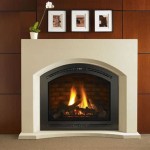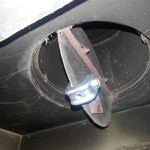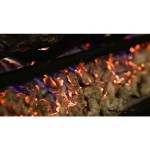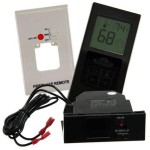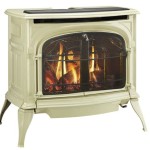Understanding Gas Fireplace Gas Valves: Function, Types, and Maintenance
The gas fireplace, a popular alternative to traditional wood-burning hearths, provides ambiance and warmth with the convenience of modern technology. At the heart of its operation lies the gas valve, a crucial component responsible for regulating the flow of natural gas or propane to the burner. A properly functioning gas valve is essential for safe and efficient operation. Failure of this component can lead to a range of issues, from inconsistent flames to complete system failure and, more seriously, gas leaks.
This article provides a comprehensive overview of gas fireplace gas valves, exploring their function, different types, common problems, and basic maintenance procedures. It aims to equip homeowners and professionals alike with the knowledge necessary to understand and address issues related to this vital fireplace component.
### The Role of the Gas Valve in a Gas FireplaceThe primary function of the gas valve is to control the supply of fuel to the gas fireplace burner. It acts as a gatekeeper, allowing gas to flow when the system is activated and shutting it off when the system is turned off or when safety parameters are not met. This fuel regulation is critical for maintaining a consistent and safe flame.
Beyond a simple on/off switch, the gas valve often incorporates several safety features. These may include a thermocouple or thermopile, which senses the presence of a pilot flame. If the pilot flame is extinguished, the thermocouple or thermopile signals the valve to shut off the gas supply, preventing unburned gas from accumulating and creating a hazardous situation. Some advanced gas valves also incorporate pressure regulators to ensure a consistent gas flow despite fluctuations in the gas supply line.
Modern gas fireplaces utilize a variety of control mechanisms, and the gas valve is integral to these systems. This can range from simple manual controls to sophisticated electronic ignition systems with remote control capabilities. Regardless of the control mechanism, the gas valve remains a central component responsible for the safe and precise delivery of fuel to the burner.
### Types of Gas Fireplace Gas ValvesGas fireplace gas valves are not a one-size-fits-all component. Different designs and functionalities cater to specific fireplace models and operational requirements. Understanding the different types of gas valves is crucial for proper diagnosis and replacement.
Manual Gas Valves: These are the simplest type, operated by a knob or lever. Users manually turn the valve to the "on" position, allowing gas to flow to the pilot light. After manually lighting the pilot, the valve can be turned to the "on" position for main burner operation. These valves are typically found in older or less expensive gas fireplace models. They offer basic functionality and require manual intervention for operation.
Millivolt Gas Valves: These valves utilize a thermopile, which generates a small electrical current (millivolts) when heated by the pilot flame. This current powers a solenoid within the valve, allowing it to open and release gas to the main burner. Millivolt systems are self-powered, meaning they do not require an external electrical source. This makes them ideal for installations where power outages are common or where running electrical wiring is difficult. They can be used with remote controls or wall switches.
Electronic Gas Valves: These valves require an external electrical power source (typically 120V AC) to operate. They incorporate electronic ignition systems, eliminating the need for a standing pilot light. Instead, an igniter sparks to light the main burner when the system is activated. Electronic gas valves are often found in newer, more sophisticated gas fireplace models. They can offer features like programmable thermostats, remote control operation, and automatic safety shutoff features.
Direct Spark Ignition (DSI) Valves: A subset of electronic gas valves, DSI systems use a high-voltage spark directly at the burner to ignite the gas. They don't have a standing pilot light. When heat is required, the gas valve opens, and the igniter generates a spark simultaneously to ignite the gas. A flame sensor then confirms the flame, and the system continues to operate. If the flame isn't detected, the system shuts down for safety. These systems are highly efficient and reliable.
Intermittent Pilot Ignition (IPI) Valves: Similar to DSI, IPI systems also use electronic ignition and require external power. However, instead of directly sparking at the burner, they ignite a pilot light. Once the pilot light is established, the main burner is ignited. The pilot light only operates when heat is demanded, making it more energy-efficient than a standing pilot system. Like DSI, they incorporate flame sensors for safety.
Each type of gas valve has its advantages and disadvantages in terms of cost, complexity, energy efficiency, and ease of installation and maintenance. Selecting the appropriate valve type depends on the specific requirements of the gas fireplace system and the desired features.
### Common Gas Valve Problems and TroubleshootingLike any mechanical component, gas valves are subject to wear and tear and can develop problems over time. Recognizing the symptoms of a malfunctioning gas valve is essential for timely repair or replacement, ensuring both safety and performance.
Pilot Light Issues: A common problem is a pilot light that won't stay lit. This can be caused by a dirty or faulty thermocouple or thermopile, a clogged pilot orifice, or a weak gas pressure. The thermocouple/thermopile is responsible for generating the electrical current that holds the gas valve open. If it's dirty, corroded, or faulty, it won't produce sufficient current. A clogged pilot orifice restricts gas flow to the pilot light, causing it to be small and unstable.
Main Burner Issues: If the pilot light is lit but the main burner won't ignite, the gas valve may be the culprit. This could be due to a faulty solenoid, a blocked gas line, or a problem with the electrical connection (in electronic ignition systems). The solenoid within the gas valve is responsible for opening the main gas supply. If it's defective, it won't open properly. A blocked gas line can restrict gas flow to the burner, preventing ignition. In electronic systems, a loose or corroded electrical connection can prevent the valve from receiving the signal to open.
Gas Leaks: A gas leak is a serious safety hazard and requires immediate attention. Signs of a gas leak include a sulfur-like odor (rotten eggs), hissing sounds near the fireplace, or dead vegetation around the fireplace vent. If a gas leak is suspected, immediately turn off the gas supply to the fireplace, evacuate the premises, and contact a qualified gas technician or the fire department. Never attempt to repair a gas leak yourself.
Inconsistent Flame: An erratic or flickering flame can indicate a problem with the gas valve's pressure regulator. The pressure regulator is responsible for maintaining a consistent gas flow to the burner. If it's malfunctioning, the flame may fluctuate in size or color. This can also be caused by fluctuations in the main gas supply to the house and not necessarily the gas valve itself.
Clicking Sounds: In electronic ignition systems, a continuous clicking sound without ignition can indicate a problem with the igniter or the flame sensor. The igniter may be faulty and unable to produce a spark. The flame sensor may be unable to detect the flame, causing the system to repeatedly attempt ignition.
Troubleshooting gas valve problems often involves a process of elimination. Start by checking the simple things, such as the gas supply, the pilot orifice, and the electrical connections. If the problem persists, it may be necessary to test the thermocouple, thermopile, solenoid, or other valve components using a multimeter or other diagnostic tools. It is crucial to consult the fireplace manufacturer's instructions and seek professional assistance if unsure about any troubleshooting steps.
### Basic Maintenance of Gas Fireplace Gas ValvesProper maintenance can extend the lifespan of a gas fireplace gas valve and prevent many common problems. While some maintenance tasks require professional expertise, homeowners can perform basic preventative measures.
Regular Cleaning: Dust and debris can accumulate around the gas valve, affecting its performance. Periodically clean the valve and surrounding area with a soft brush or vacuum cleaner. Be careful not to dislodge any wires or connections.
Pilot Orifice Cleaning: A clogged pilot orifice is a common cause of pilot light problems. Use a small needle or pin to carefully clean the orifice, removing any debris that may be obstructing the gas flow. Be extremely careful not to enlarge the orifice, as this can affect the flame characteristics. A specialized pilot orifice cleaning tool is recommended.
Thermocouple/Thermopile Inspection: Visually inspect the thermocouple or thermopile for signs of corrosion or damage. Clean the metal tip with fine steel wool to remove any buildup. If the thermocouple/thermopile appears significantly damaged, it should be replaced.
Gas Line Inspection: Regularly inspect the gas line connections for leaks. Use a soapy water solution to check for bubbles, which indicate a leak. If a leak is detected, immediately turn off the gas supply and contact a qualified gas technician.
Professional Servicing: Schedule a professional inspection and servicing of the gas fireplace at least once a year. A qualified technician can thoroughly inspect the gas valve, burner, and other components, ensuring they are in good working order and making any necessary adjustments or repairs.
Performing these basic maintenance tasks can help ensure the safe and efficient operation of the gas fireplace and prevent costly repairs in the future. However, it's crucial to remember that working with gas appliances can be dangerous. If unsure about any maintenance procedures, always consult a qualified gas technician.

Dante Cp Bvs2 Br B 3 4 Inch Quarter Turn Straight Gas Ball Valve Kit Brass

Universal Gas Valve Keys Fireplace Key Replacement

Your Guide To Gas Log Valves Controls Woodlanddirect Com

Sit 820 Series Millivolt Fireplace Valve 225 Degree 30 Turndown Natur Fire Parts Com

Replacing A Gas Ball Valve To Your Fireplace

How To Test Your Main Control Valve Www Mygasfireplacerepair Com

Control Valves Fire Parts Com

Pro Flex Hearth Master Valve Kit Straight Brushed Nickel Finish Key And In The Gas Fireplace Log Accessories Department At Com

Montigo Gas Valve Ng Rgc1006

Gas Valve Kit Guide Fireplaces Direct Learning Center


